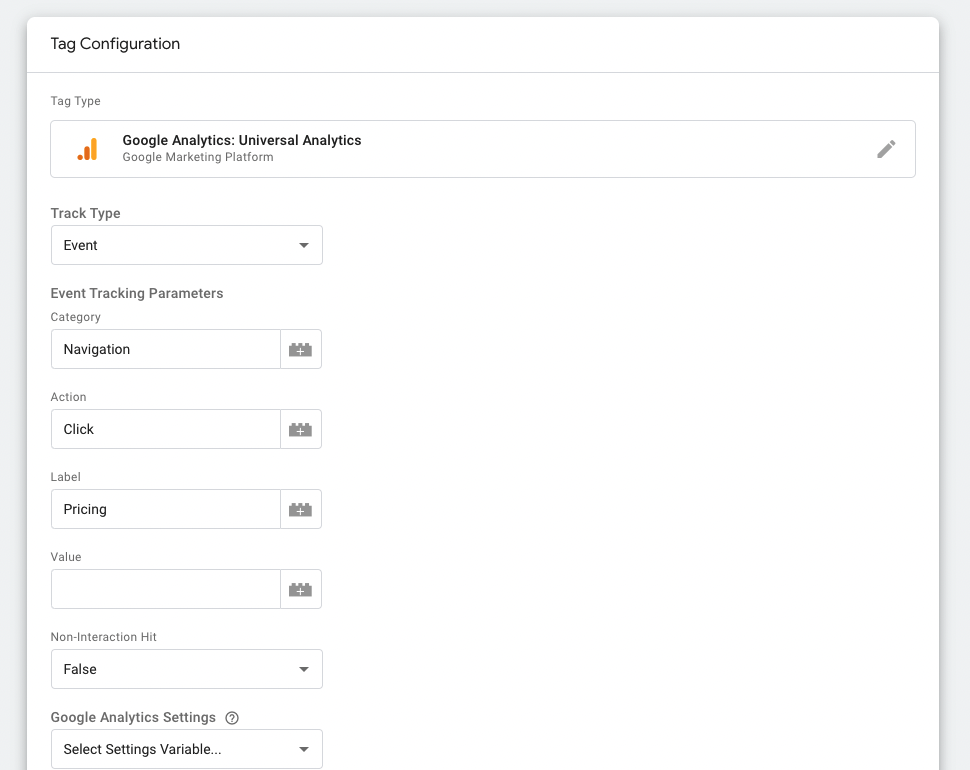The Of Google Analytics Event Tracking
Table of ContentsExcitement About Google Analytics Event TrackingFacts About Google Analytics Event Tracking RevealedSome Ideas on Google Analytics Event Tracking You Should KnowThe Definitive Guide to Google Analytics Event TrackingA Biased View of Google Analytics Event TrackingAn Unbiased View of Google Analytics Event Tracking

If you're going to establish up occasion monitoring manually, after that you're going to need to add some added code to the components you intend to accumulate information from. The code you're mosting likely to function with will look something like this: There are 4 parts within that code fragment that you're mosting likely to require to define on your own: occasion, Classification, event, Action, occasion, Label and occasion, Value.
As you can see, two of these are called for (classification and activity) while label and value are optional. All of it depends upon the kind of details you want communicated back to Google Analytics when a user clicks the defined aspect (Google Analytics Event Tracking). It will be a lot simpler to define these parts if you analyse your site and determine which elements/actions you want to track
A Biased View of Google Analytics Event Tracking
Now, you'll be asked to define the and and you'll wish to select from the drop-down food selection that shows up when you click. This will bring up the exact same event monitoring parts we considered earlier, which you'll need to fill in. Once you have actually defined these, you can relocate to the second box and select the trigger that will fire your tag.
On the next display, you'll additionally have a field for naming your trigger and, if you click package, you'll see a checklist of the various triggers you can pick. In this case, we wish to select and afterwards select the option listed below. You'll establish the trigger to just discharge when a component is clicked with a Link that contains the.
Straightforward - Event monitoring! Event tracking offers you a picture of how customers involve with your website and business. Read on as we check out whatever you need to understand, including what it is, why you must track occasions, exactly how to take care of occasions information, and other appropriate Frequently asked questions you might have.
Top Guidelines Of Google Analytics Event Tracking
You can switch over in between your event classifications, activities, and tags in the Top Occasions report. The Occasion Pages record presents the why not find out more web pages where occasions are triggered.
It shows you the course they take as they move from one event to the following and assists you to determine which web content involves your audience the most. Occasions in Google Analytics have four main elements. They are additionally a component of the occasion tracking code. Google Analytics uses these codes to track user communications and team them right into occasion records.
A listing of the parameters you can track on your web site is on the. After checking all essential areas, you can click "X" to close the home window and return to the Overview menu on the.
Getting The Google Analytics Event Tracking To Work

If you haven't done so, you might require to set up a variable in the Google Analytics Settings box. After this, enter your GA tracking ID in the Tracking ID area.
To do this, adhere to the next series of activities: After setting up the areas, select the "Triggering" section. When configuring your new trigger, click the "+" button, Discover More then the "pencil" button, then choose your trigger type.
Google Analytics Event Tracking for Beginners

When it familiarizes which sections and aspects are assisting customers with your next conversion channel, you still will not recognize. Without event monitoring, GA records will only count brows through as single-page sessions, also if individuals spend a lot of time on one page and involve with it considerably (and a bounce).
Just how does event tracking accomplish this?Single-page sessions recognized as bounces begin and conclude on the exact same web page. Without occasion monitoring, GA will categorize a customer's see as a bounce if they don't navigate to one more web page, despite exactly how they connect with it. A video-rich page can have a higher bounce price if events are not tracked.
Not known Facts About Google Analytics Event Tracking
Nevertheless, for GA to take event hits into account when determining bounce rates, you should choose "Non-interaction event" as "False" during the GTM setup. Setting "event objectives" with event activity is an exceptional method to keep track of customer activities you value highly, such as brand-new lead submissions or click a phone call to action.